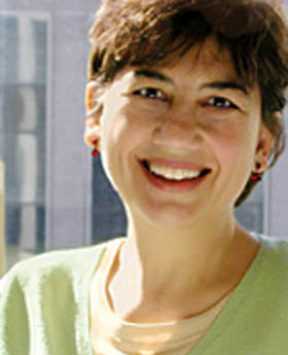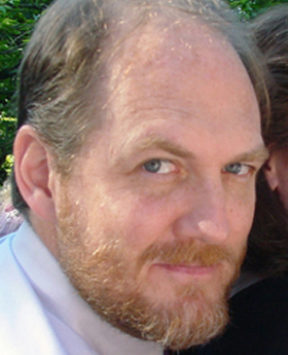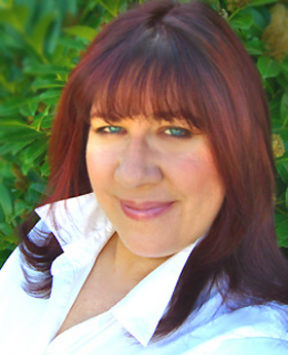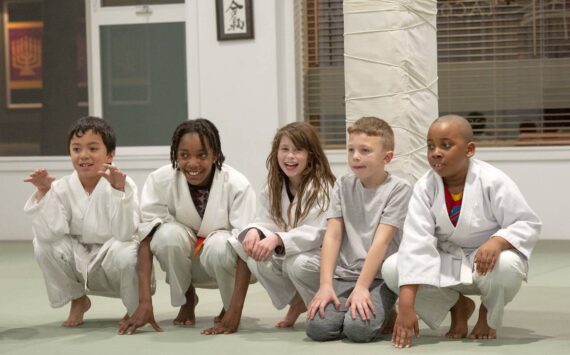Combining editorial and design excellence, a TV-like interface, and unparalleled streaming quality, The FeedRoom provides a user-friendly platform for all types of video content.
The FeedRoom enables media companies, corporations, universities, and trade associations to leverage existing video assets with a new, completely customized distribution channel – the Web.
My world seems to revolve around the Internet.
Even though my job and my avocations are so net-centric, it doesnt mean I dont stay plugged in to the news of the world: politics, pending war, popular culture and local news coverage are as close as my PC monitor.
About a year ago, I started seeing a video-on-demand (VOD) Web site start popping up on the WindowsMedia.com Web site: The FeedRoom.com, a news network on the Internet.
Then I started to seeing the FeedRoom VOD available from the local KCPQ-TV station Web site Q13.com in Seattle.
I found myself regularly spending a compelling hour on this FeedRoom from Q13.
The FeedRoom delivers segmented news of all kinds via high-quality video any time I wanted it.
The FeedRooms founder and CEO is Jon Klein, an Emmy Award winning former executive vice president of CBS News, overseeing 60 Minutes and 48 Hours.
This month, Streaming Magazine gave Klein the 19th position in their list of the 50 Most Influential People in Streaming, announced at the Streaming Media East 2002 conference.
I asked Klein to share his view of news on demand on the Internet and its convergence with television.
Q: Tell us how you got started in news broadcasting.
Klein: My entire adult life has been in broadcasting. I started in local radio in Providence, Rhode Island. Then I worked in the TV station in Providence. I started in radio in 1976 and then in television in 1980. I went to New York and started at CBS where I stayed for sixteen years. I started as a writer on the overnight shift, then became a producer. Eventually I made my own documentaries for prime time.
I did the first primetime reality TV series on network TV. It was called Before Your Eyes, a series of two-hour long movies of the week that had no actors or scripts. We just followed real life events as they unfolded.
CBS made me executive vice president of CBS News overseeing 60 Minutes, 48 Hours and the other prime time programming. So Id gotten a taste of the broadcasting world from both the creative side and the management side.
Q: What did you learn from CBS News that you improved for the FeedRoom?
Klein: What struck me was, as producers, we were really flying blind. We were guessing what the audience wanted to watch and most of the time we were guessing incorrectly. And as a result we were not providing viewers with the kind of information.
If you watch network and local newscasts, they tend to give you the exact same thing, no matter what channel you watched. In fact, it was creepy to watch because every night we used to march into the office of the president of CBS News and watch all four network newscasts at 6:30 p.m.: ABC, CBS, NBC, CNN.
What was creepy about it was that invariably they all had the same lead story, and they all had the same second story. They went to commercial at the same time and they came back after that commercial with the same story. Even within the stories themselves you had this same format.
For instance, a story about the White House would start with an exterior from the White House, then would cut to a two-shot of the President sitting in those yellow chairs with some world leader and then a sound bite from the President and then a standup on the White House lawn.
Now multiply that by four. With all those shots happening in the exact same time, its enough to make you realize you might not think there is a conventional wisdom when you were working inside one of those organizations, but of course there was.
The viewers arent being served. The typical viewer has interests that are far broader then what those newscasts are giving them.
What amazed me is our network was taking in to our satellite room, the Feed room, a ton of material from all the local stations around the country and overseas – a real fascinating breadth of material. But the same old stuff would always trickle out of that. What happens to the rest of that? The FeedRoom is what happens to go rest of that.
The FeedRoom enables viewers to pick and choose among all the video thats flying around satellites every day, and decide what news stories they most want to watch, when they want to watch it, and they dont have to show up at 6:30 p.m. in order to be spoon fed the stories that some anonymous producer decides. In the FeedRoom you decide what you will watch.
Peter Jennings and Tom Brokaw only have 22 minutes to tell you everything. They have to guess at what the broadest common denominator wants to watch and do it within a limited time frame. The FeedRoom has as much time as you do.
Q: What inspired you to leave CBS and start the FeedRoom?
Klein: I figured there had to be a better way to bring the news to the public. I was working with a bunch of guys who had started television news: Don Hewitt, Mike Wallace, Walter Cronkite.
You could see they still had a passion of the invention. These were the guys that created TV news as we generally know it today. And they did this back in the fifties. They left cushy jobs in radio or in print reporting in order to take a flyer on this thing called television. You could see they were still high from having done it.
Well, that was infectious. I saw how broadband penetration was beginning to arrive back in 1998 and that the future of the Web was going to be multimedia. It was not going to be text.
We know from television that viewers prefer to watch information rather then read it. So I thought Lets create TV 2.0, TV that lives on your PC and gives you all the emotional impact of watching video with all the interactivity of the Web.
I was dumb enough about the whole space to just go ahead and think I could do it.
Lo and behold, we are now the number one source of online news video in the world. We are more popular then CNN. We are more popular MSNBC when it comes to watching video.
Thats ironic because those organizations own cable channels so they are generating a ton of video every day, but they are not making it available to the public in the kind of numbers we are.
Weve got thousands of news stories, so you just sit down, get comfortable, get a cup of tea – or if you have two minutes at your desk at work, where you probably have a high speed connection, log on and watch a few of the latest news video clips and then come back later in the day to see what you have missed.
This can be highly localized information as well as national news, because we deal in both ways. We partner with local TV stations in major markets, including KCPQ TV in Seattle, so you can get local news, national and international news, as well as health tips, fashion, entertainment, sports – you name it, weve got it.
Q: Usability experts have found people dont like to read online. Certainly a television paradigm fits perfectly. Another thing youre doing with the FeedRoom is its so simple and so functional. Did you go through user testing for that?
Klein: Well, its scary. The FeedRoom looks like the sketch I drew on the back of a napkin on the beach in the summer of 1998!
Thats how I know its not perfect yet. It couldnt be because we havent gone through the rewrite yet. I write screenplays in my spare time, which there is none of these days. A screenwriter always knows you never go with your first idea. Always rewrite, rewrite, rewrite. We haven’t got to the rewrite phase yet.
Essentially I thought, Look, lets create a big TV screen right in the middle of your computer monitor. Lets make it as close to television as we can possibly make it. Lets make it as intuitive as possible – just like television.
We kind of engineered this backwards. Traditionally, the way things get engineered on the Web is technologists tell the content people whats possible. The content people must deliver content within the constraints of the technology. We did it backwards. We say, Here is the content that will be delivered. Build technology to do that.
There were an awful lot of people telling us at the time that what we are doing today could never be done: you couldnt make the screen that big, you couldnt get the navigation to work as fluidly as we do. But I just thought, “Let’s go for broke and tried to create the best possible approach and that’s what we’ve got. Sure enough, people are responding to it.
The full audio interview with Jon Klein, CEO of the FeedRoom.com, can be heard anytime at www.webtalkguys.com.
Dana Greenlee is a Web designer and co-host of the WebTalkGuys Radio Show, a Tacoma-based talk show featuring technology news and interviews. WebTalkGuys was just named the top Hidden Gem in PCWorld Magazines August 2002 issue. It is broadcast locally on KLAY 1180 AM Saturdays at 11 a.m. The show is also on CNET Radio in San Francisco, on the Web at www.CNETRadio.com, www.WebTalkGuys.com, via the XM Satellite Network, on IM Networks Sonic Box and on the Mobil Broadcast Network. Past shows and interviews are also Webcast via the Internet at www.webtalkguys.com.






